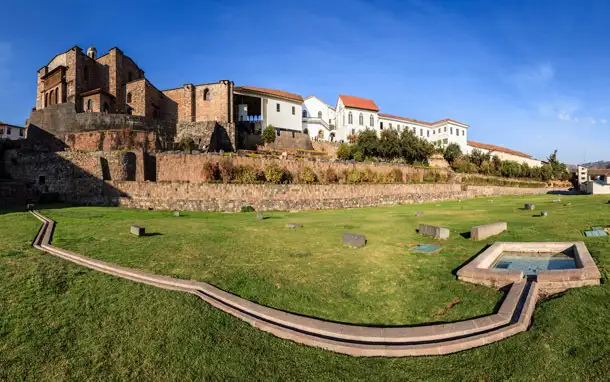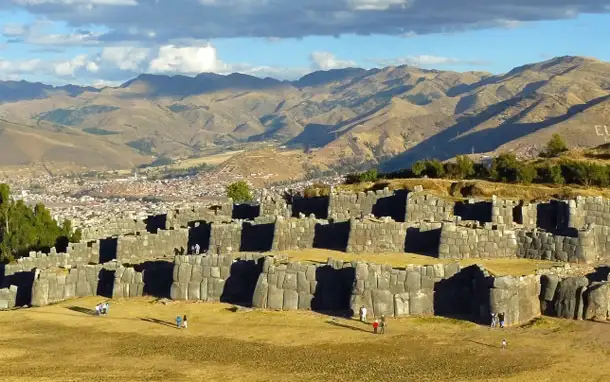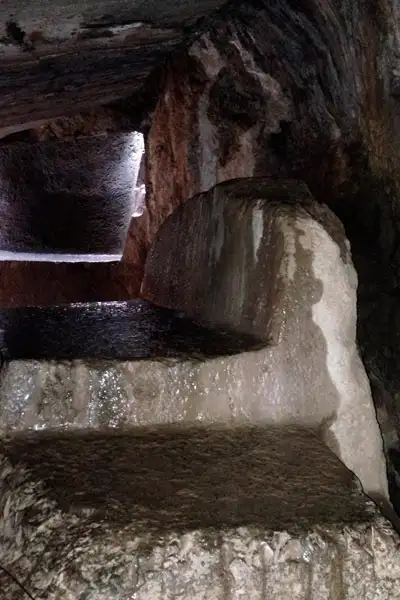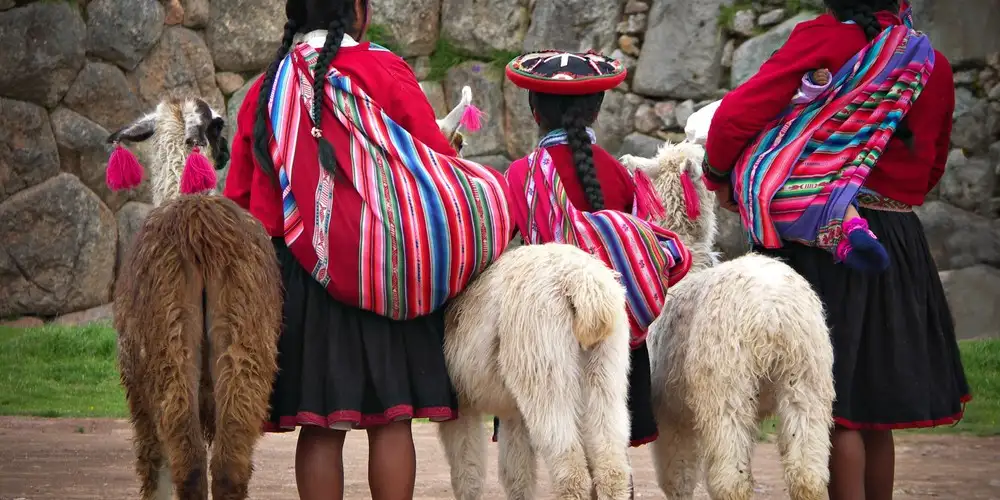
(Photo: Quechua Women in Sacsayhuaman via Shutterstock)
There’s no need to make it all the way to Machu Picchu to see great Incan monuments; they’re readily accessible in Cuzco too, and what a site to behold! Once a capital of the Incan Empire, Cuzco still reigns supreme with majestic ruins, including the precolonial sites Qorikancha, Saqsayhuaman, and Qenko.
Qorikancha (Coricancha)
Qorikancha has always been a place of worship. Today, the Dominican Order has a church on part of the site, but during the Incan reign, the temple was a central place to pay homage to the sun god Inti.
Qorikancha is believed to have been the empire’s most sacred site, and chroniclers tell of its exterior walls lined with massive gold plaques and its courtyard filled with life-sized statues of llamas, pumas, crops, and past Incas—all made of solid gold. The “golden courtyard” or “temple of gold” so impressed Spanish conquerors that they assumed the region was rich with the metal.
(Photo: Qorikancha Courtyard via Shutterstock)
Qorikancha was also used for astronomical observations as well as for celebrating various other deities, including the moon goddess Killa. To this day, elaborate fountains dispense water in honor of Killa—the source of the water remains a mystery to modern-day city developers. Even more puzzling is the current location of Qorikancha’s vast amounts of gold, but as one local tour guide plainly put it, “Our gold is dispersed throughout the world.”
Today, neither the lack of gold nor the Dominican Church erected above one wing of the site takes away from this treasure’s real worth as a priceless example of Imperial Inca architecture, bursting with stories of a gilded age.
Sacsayhuaman (Saksaywaman)
The only thing more impressive than the amazing views of Cuzco observed from Saqsayhuaman is Saqsayhuaman itself. Perched high above Cuzco on the northern outskirts of the city, the site, like the wild animal it represents, is both beautiful and mysterious.
(Photo: Thinkstock/iStock)
When conceived, Cuzco’s city borders were designed to outline the shape of a puma—the spirit animal representing the land of the living—with the Qorikancha site smack-dab in the creature’s navel and Saqsayhuaman as the puma’s head. Enter Saqsayhuaman today and evidence of the large cat’s shape is immediately obvious. Clearly delineated zigzags tower overhead to form mammoth teeth, while rounded boulders shape the skull—all stacked a good 20 feet high.
Though the imposing structures produce a clearly distinguishable puma, Saqsayhuaman’s original purpose isn’t as apparent. That’s because only an estimated 20 percent of the original site still exists today. Still, past pillaging of Saqsayhuaman didn’t rob the place of its monolithic stones—the single largest of which weighs 360 tons. The secret of how it was transported to the site is the whodunit that only the puma can decipher.
Qenko (Quenco or Q’inqu)
Qenko was once a place of worship and sacrifice, according to common belief, and just one glance at the patterns on the towering monolithic stone in the small sacred site is enough to convince most visitors. Qenko’s limestone boulder, which measures 20 feet high, features zigzagging channels through which ceremonial chicha (alcoholic brew) or sacrificial llama blood once ran.
The stone hides an even more sinister secret. A carved hollow holds an ominous altar. Bone remains discovered around the altar have led archaeologists to believe that it also served as a surgical table for dissection and mummification. A waterway running below the table makes the surface cold to the touch—a key feature for handling corpses and remains, and genius architecture by ancient indigenous peoples.
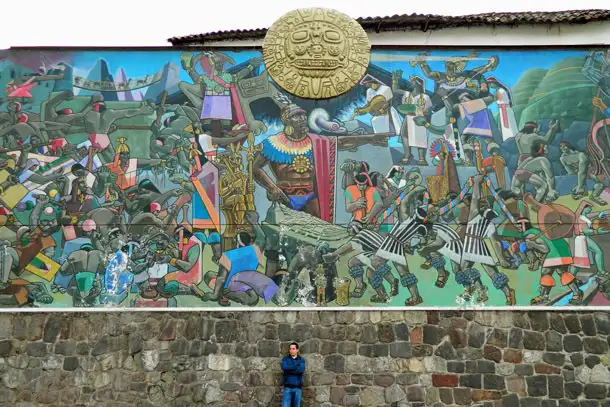 |
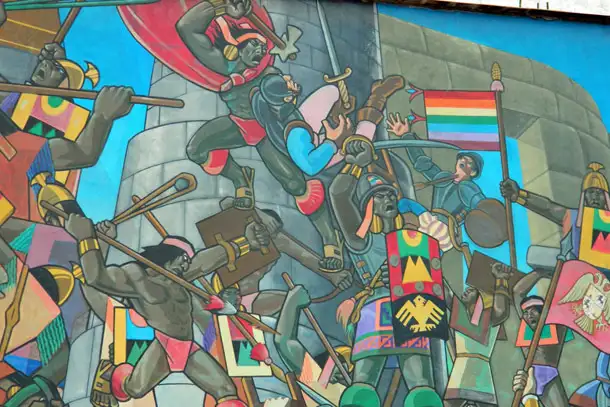 |
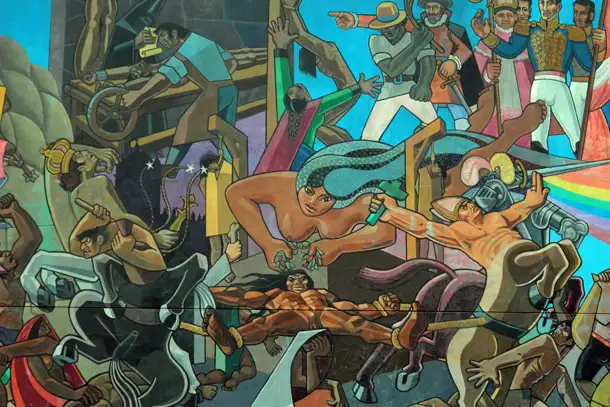 |
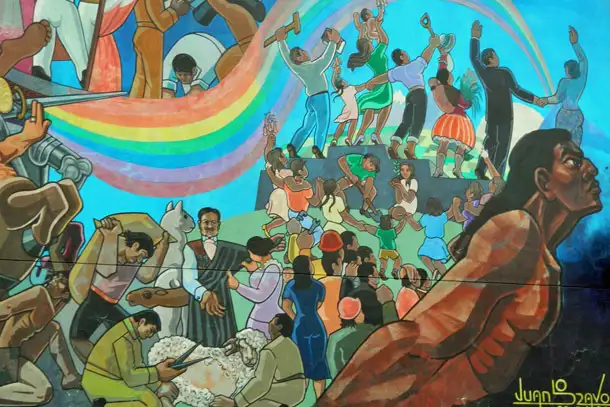 |
Juan Bravo’s Mural Historico del Qosqo fresco, detailing Cuzco’s history. Clockwise: Pachacutec Extensively Builds Upon the Inca Empire, Last Stand at Saqsayhuaman, Quartering of Tupac Amaru, Spirit of Tupac Amaru Soaring/Present-Day Peru. (Photos: Patricia Magaña)
Have a question for Pati about her trip to Cuzco? Planning a trip yourself and need advice? Want to share your own Cuzco experience? Leave a comment below!
You Might Also Like:
- Machu Picchu: How to Plan a Perfect Trip to the Lost City of the Incas
- How to Hike the Inca Trail
- Nine Reasons to Visit South America Right Now
Like this story? Join the 1 million other travelers who read our free Deal Alert newsletter. It’s full of our best tips, trip ideas, and travel deals. Subscribe here today!
We hand-pick everything we recommend and select items through testing and reviews. Some products are sent to us free of charge with no incentive to offer a favorable review. We offer our unbiased opinions and do not accept compensation to review products. All items are in stock and prices are accurate at the time of publication. If you buy something through our links, we may earn a commission.
Related
Top Fares From
Today's Top Travel Deals
Brought to you by ShermansTravel
Kenya: 14-Night Tour, Incl. Tanzania &...
smarTours
 vacation
$7125+
vacation
$7125+
7-Night Caribbean Round-Trip Cruise From Orlando:...
Norwegian Cruise Line
 cruise
$739+
cruise
$739+
Ohio: Daily Car Rentals from Cincinnati
85OFF.com
 Car Rental
$19+
Car Rental
$19+
